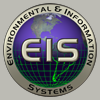
|
Bob Goddard Senior Principal Physicist rpg3@uw.edu Phone 206-543-1267 |
Research Interests
Mathematical Modeling, Object-oriented Computer Software Design, Underwater Acoustics, Signal Processing
Biosketch
Dr. Goddard is the primary author of the Sonar Simulation Toolset (SST) software for computer simulation of sound in the sea. SST is used at several U.S. Navy and university laboratories to generate artificial underwater sound, which is used to develop new sonar systems, train sonar operators, and predict performance of new and existing sonar systems and tactics. Recently Dr. Goddard joined the Resource Facility for Population Kinetics in the UW's Department of Bioengineering. He leads the software development group, building tools for analysis of biomedical and pharmaceutical data.
Education
B.S. Physics, California Institute of Technology, 1969
Ph.D. Physics, University of Wisconsin, Madison, 1978
Projects
|
Sonar Simulation Toolset (SST) The Sonar Simulation Toolset is a computer program that produces simulated sonar signals, enabling users to build an artificial ocean that sounds like a real ocean. |
More Info |
30 Oct 2008
|
|||||||
|
SST, or Sonar Simulation Toolset, is a computer program that produces simulated sonar signals, enabling users to build an artificial ocean that sounds like a real ocean. Such signals are useful for designing new sonars, testing existing sonars, predicting performance, developing tactics, training operators and officers, planning experiments, and interpreting measurements. SST's simulated signals include reverberation, target echoes, discrete sound sources, and background noise with specified spectra. Externally generated or measured signals can be added to the output signal or used as transmissions. Eigenrays from the Generic Sonar Model (GSM) or the Comprehensive Acoustic System Simulation (CASS) can be used, making all of GSM's propagation models and CASS's GRAB propagation model available to the SST user. |
|||||||||
|
Publications |
2000-present and while at APL-UW |
Optimal beam forming on synthetic interference and noise for active processing of multiplet line arrays Simakov, S., Z.Y. Zhang, and R.P. Goddard, "Optimal beam forming on synthetic interference and noise for active processing of multiplet line arrays," Proc., 2015 IEEE Conference on Acoustics, Speech and Signal Processing (ICASSP), 19-24 April, South Brisbane, Queensland, 2519-2523, doi:10.1109/ICASSP.2015.7178425 (IEEE, 2015). |
More Info |
19 Apr 2015 |
|||||||
|
Optimal beamforming on synthetic noise and interference is a flexible and intuitive technique for shaping beam patterns. In this method, suppression of arrivals from undesirable directions is achieved through introduction of synthetic interferences and optimal beamforming using the resulting noise-interference covariance matrix. We apply this approach to a general multiplet line array and test the algorithm on representative multi-channel time-series obtained for a quadruplet line array. |
|||||||||
Time series simulation of underwater sound: Key issues and techniques Goddard, R.P., "Time series simulation of underwater sound: Key issues and techniques," J. Acoust. Soc. Am., 129, 2364, doi: 10.1121/1.3587648, 2011. |
More Info |
1 Apr 2011 |
|||||||
|
Computer systems for generating simulated underwater sound have been in use for more than 30 years. Such systems, including the author%u2019s sonar simulation toolset (SST), enable users to build an artificial ocean that sounds like a real ocean, as heard by a user-specified listening system. Such signals are useful for designing new acoustic systems for undersea sensing or communication, testing existing systems, predicting performance, developing tactics, training operators, planning experiments, and interpreting measurements. Signals of interest include reverberation, target echoes, discrete sound sources, and background noise. The author will describe, in broad outline, techniques for generating simulated underwater sound and criteria for choosing among them, focusing on target echoes and reverberation for active sonar systems. The characteristics of the ocean as an acoustic medium, the characteristics of the sensors, the processing and display systems behind the sensors, the purpose of the simulation, and the computational resources available for the simulation all strongly influence the choice of algorithms to achieve useful, cost-effective, simulated underwater sound. The characteristics of the human auditory system are of minor importance. |
|||||||||
The Sonar Simulation Toolset, Release 4.6: Science, Mathematics, and Algorithms Goddard, R.P., "The Sonar Simulation Toolset, Release 4.6: Science, Mathematics, and Algorithms," APL-UW TR 0702, October 2008. |
More Info |
30 Oct 2008 |
|||||||
|
The Sonar Simulation Toolset (SST) is a computer program that produces simulated sonar signals, enabling users to build an artificial ocean that sounds like a real ocean. Such signals are useful for designing new sonar systems, testing existing sonars, predicting performance, developing tactics, training operators and officers, planning experiments, and interpreting measurements. SST's simulated signals include reverberation, target echoes, discrete sound sources, and background noise with specified spectra. Externally generated or measured signals can be added to the output signal or used as transmissions. Eigenrays from the Generic Sonar Model (GSM) or the Comprehensive Acoustic System Simulation (CASS) can be used, making all of GSM's propagation models and CASS's Gaussian Ray Bundle (GRAB) propagation model available to the SST user. A command language controls a large collection of component models describing the ocean, sonars, noise sources, targets, and signals. The software runs on several UNIX computers, Windows, and Macintosh OS X. SST's primary documentation is the SST Web (a large HTML "web site" distributed with the SST software), supported by a collection of documented examples. |
|||||||||






